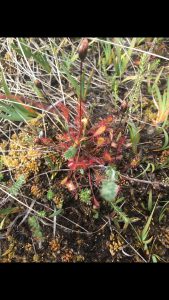Follow the link to see the blog from the National Park which includes our student research at Lampert


Follow the link to see the blog from the National Park which includes our student research at Lampert

We went to Hauxley just for fun. Ray shared what he had learned from geology classes with NHSN, Elizabeth educated us on the birds while Alex made the star find of the day, a Prunus species embedded in the peat layer, with enormous lenticels – see below. Janet Simkin was extremely excited to find a lichen, Thelotrema on it. These are Janet’s photos
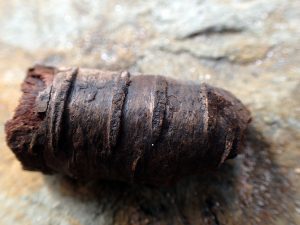
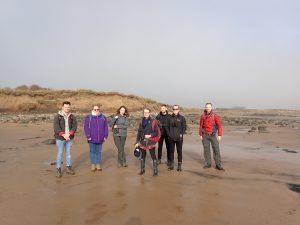
Biodiversity Conservation and Management MSc

Ray showing us the crinoids. Peat layer just about visible in the dune to left
 UG and MSc students presenting the results of their research on bog restoration at Lampert and monitoring techniques using satellite images – to local farmers, landowners, Natural England and Northumberland National Park Authority. So proud of all them as they answer the questions the practitioners are asking. Thanks Abi and Dr Richard Bevan — at The Sill: National Landscape Discovery Centre
UG and MSc students presenting the results of their research on bog restoration at Lampert and monitoring techniques using satellite images – to local farmers, landowners, Natural England and Northumberland National Park Authority. So proud of all them as they answer the questions the practitioners are asking. Thanks Abi and Dr Richard Bevan — at The Sill: National Landscape Discovery Centre
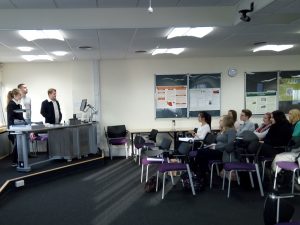 All first years had to create a poster (visible on the wall, look) and give a 5 minute presentation on a question of their choice under the general theme of Food Security at their first conference this week. They rose to the occasion, and the Environmental Science, Earth Science and Applied Plant Science students had the added please of our PVC Prof Phil Wright calling by to hear their talks on Desertification in Iran, El Nino in Australia, Californian Drought and Volcanoes and Food Production.
All first years had to create a poster (visible on the wall, look) and give a 5 minute presentation on a question of their choice under the general theme of Food Security at their first conference this week. They rose to the occasion, and the Environmental Science, Earth Science and Applied Plant Science students had the added please of our PVC Prof Phil Wright calling by to hear their talks on Desertification in Iran, El Nino in Australia, Californian Drought and Volcanoes and Food Production.
Thank you so much to all our speakers from ecological and environmental consultancies, from conservation charities, businesses and government bodies – for giving up your day to inspire and ethuse our students. We had short talks from each speaker about what their job involves and advice for students; then speed interviews and CV workshops. See below. Students went away with contact details, with new resolves, with improved CVs and they even said they had fun. Employers also said it was valuable to meet and learn from the students.
Contributers: North Pennines Area of Outstanding Natural Beauty Partnership, Northumberland National Park Authority, EcoNorth, BT Ecology, Budhaig Ecology, National Trust, Durham Wildlife Trust, Northumberland Wildlife Trust, ID GeoEnvironmental, ErgoEnvironmental, Cundall, Wardell-Armstrong, WSP, JBA Consultancy, Environment Agency.
Also thanks to Simon Peacock and Janet Simkin and Helen Atkinson and to the Great North Museum.
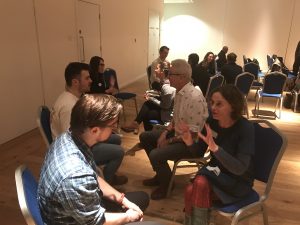
Speed interviewing – 2mins to answer a potential interview question; here with Fiona Knox North Pennine Area of Outstanding Natural Beauty Partnership

Getting help with CVs and job applications – here with Ann Francis of Buhdaig Ecology –
I’ve been working with the North Pennines Area of Outstanding Natural Beauty on a number of projects. For this one, I got the fun of analysing the data and making the poster, while Alistair had the fun of travelling up to the IUCN conference and sharing our findings; we have some good indications that blocking the drains is effective. The photo of the blocked drain in the bottom left is a bit of a cheat as it is from drain blocking by the Northumberland Wildlife Trust 20 years back on Coom Rigg (Border Mire). But it matched my colour scheme (and is exactly what we want to achieve), so was difficult not to include.
2 amazing summer interns and 1 incredibly tenacious MSc student set out to survey 40 of the incredibly beautiful, bleak, remote Kielder Mires this summer. Bursaries from Natural England enabled this, and NE worked with us to try to establish a link between quality of the bogs as determined by the vegetation, with that derived using satellite image techniques. The interns found muscles they never knew existed as they plodged through the deep heather and bouncy Sphagnum. They were rewarded on their last day with the carnivorous plant, Drosera anglica (great sundew) – which we don’t see around these parts that much. I only have a screenshot of it. 